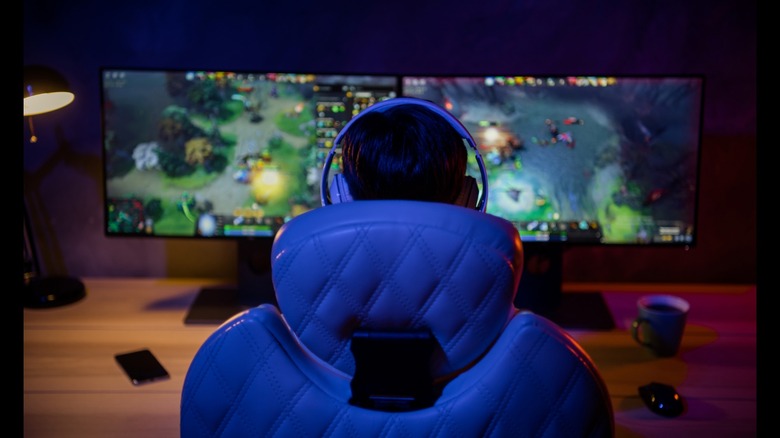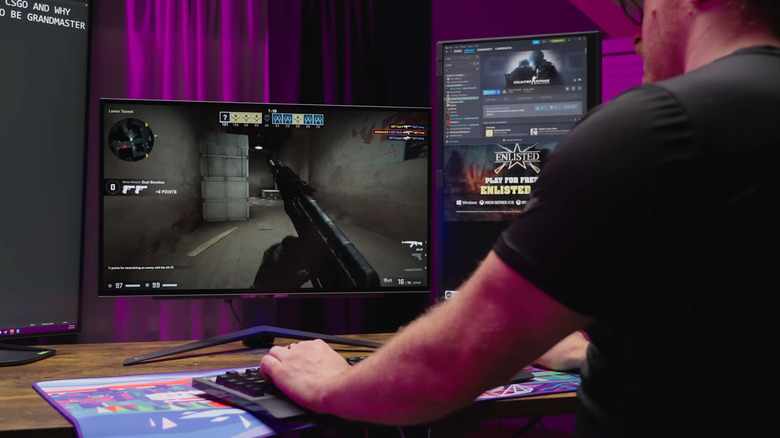Should You Unplug Your Second Monitor When Gaming?
Gamers know that every second and every frame matters when playing a game. This concept is especially true for fast-paced games that rely on split-second decisions, like first-person shooters or real-time strategy games. Although the human eye can only see anywhere from 30-60 frames per second at any given time, even the slightest reduction in frames can cause issues at high levels of play.
Along with this desire to squeeze in every conceivable frame, another popular trend developed with the greater mass adoption of PCs is the use of more than one monitor. While once considered a luxury only afforded to those with the best hardware setups, having two or more screens has become far more commonplace in our modern world. However, with this rise has also come a theory from gamers. One which was pretty hard to prove until recently.
According to a new test done by Linus Tech Tips, using more than one monitor can reduce a computer's overall frames per second when gaming and streaming video, but that's just part of a bigger story. Here's why more than one monitor can reduce FPS, but also why unplugging your second display is probably not worth it.
Unplugging monitors has little effect on FPS
While it's true that testing showed a reduction in frames per second when utilizing different monitors, the actual reduction in overall FPS was somewhat negligible based on the title being played. For instance, a graphically intense game like "Read Dead Redemption 2" tested on a single monitor clocked in at a 202 FPS average, while tests using a four monitor setup resulted in 198 FPS on the game, resulting in around a 2% difference.
However, tests for other games like "Total War: Warhammer 3" saw a more significant drop, from 213 FPS on a single monitor setup to 199 FPS with four monitors, a nearly 7% decrease in overall frames. The tests also included two monitor setups, which saw a reduction in FPS that was even less significant than gaming with four active screens. So, while it is true that having extra monitors plugged in and playing video will reduce FPS, the amount of frames lost may not even be detectable by the human eye.
That being said, these tests were performed on the best hardware in the market, and a 7% differential in the best-case scenario may not be detectable. However, this quickly changes when speaking of the potential performance degradation on older hardware, where stable framerates of 100+ are not achievable. In these cases, a 7% difference in frames from 30 FPS could result in stuttering, which would be noticeable to those on older hardware or with older GPUs.
Technological innovation causes multi-screen lag
What was perhaps most interesting about the test, however, was the fact that the FPS reduction was seen regardless of whether a video was minimized or not. While the reduction in overall gaming performance occurred most when rendering 4K compared to 1080p on multiple displays, FPS reduction was seen across the board regardless of whether the video was played in a maximized window or not.
GPU usage increased for video decoding, meaning that Nvida's NVDEC and NVENC technology, which was originally developed to enable streaming and playing games on the same PC, could cause a loss in performance. These innovations originally separated decoding and encoding into separate parts of the GPU, enabling people to stream games while simultaneously playing them with a minimal impact on performance.
Realistically, however, in the vast majority of cases, there should be no noticeable difference in gameplay performance when unplugging your second monitor. However, there may be other reasons you'd want to unplug it, like better cord management or immersion in your favorite titles. That being said, you'll probably be disappointed if you're looking for a huge FPS boost by simply unplugging your second screen. If you want a more reliable boost, the obvious answer is the right one. A better video card and other hardware could increase the frame rate of your favorite games.


